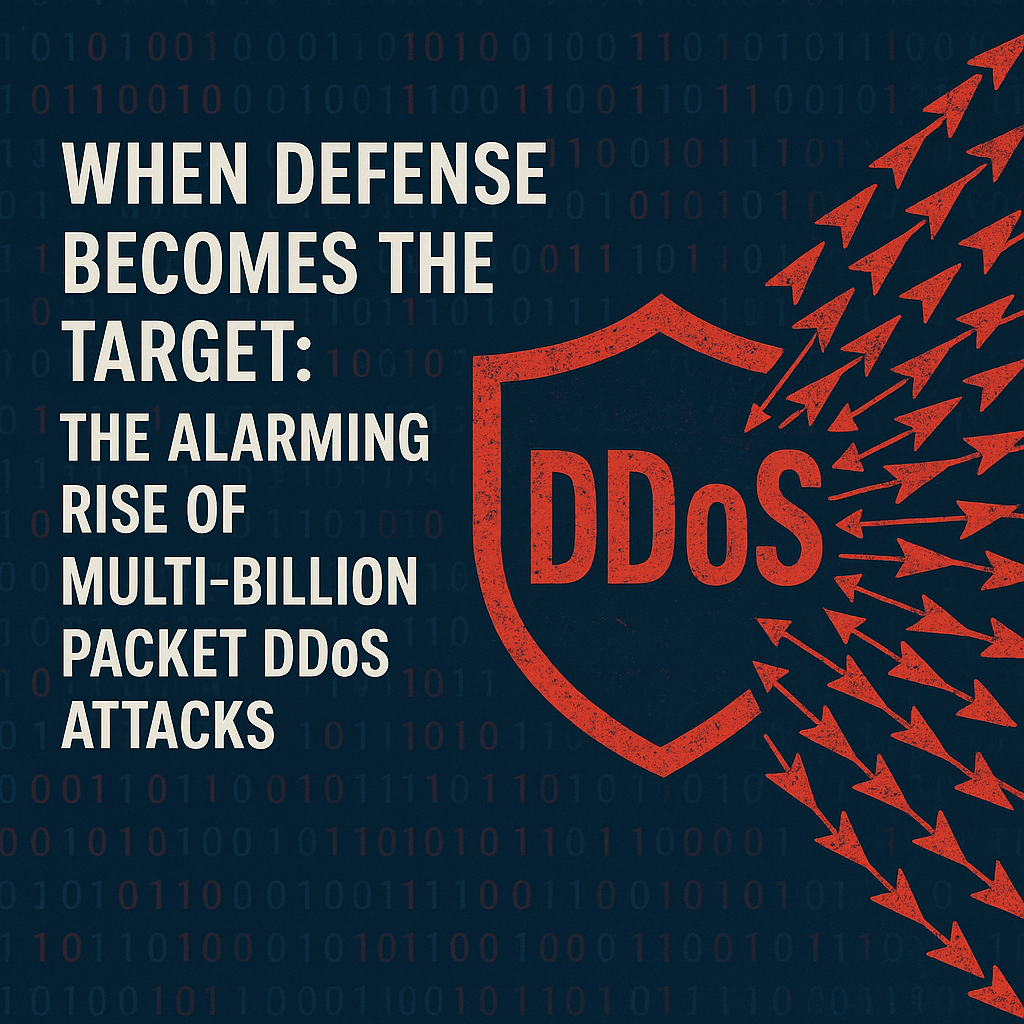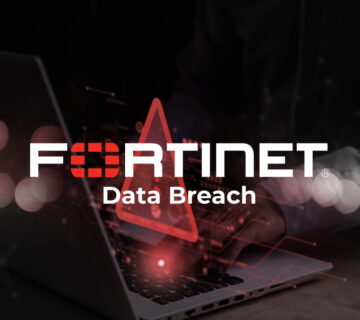Docker API Security Under Siege: How Cybercriminals Exploit Exposed APIs Through Tor Networks
🎙️ Dive Deeper with Our Podcast!
Docker API Security Under Siege: From Mining to Botnets
👉 Listen to the Episode: https://technijian.com/podcast/docker-api-security-under-siege-from-mining-to-botnets/
The cybersecurity landscape continues to evolve as threat actors develop increasingly sophisticated methods to compromise cloud infrastructure. Recent discoveries by security researchers have unveiled a concerning trend where cybercriminals are targeting exposed Docker APIs while leveraging the anonymity of the Tor network to mask their operations. This emerging threat represents a significant shift from simple cryptocurrency mining attacks to more complex botnet infrastructure development.
Understanding the Docker API Threat Landscape
Docker APIs serve as critical communication interfaces that allow external applications and services to interact with Docker containers. When these APIs are exposed without proper security measures, they become prime targets for malicious actors seeking to gain unauthorized access to containerized environments. In fact, Docker API breaches have increasingly been reported, with attackers exploiting unsecured endpoints to deploy cryptominers, steal sensitive data, or gain control over entire clusters. Such breaches highlight the importance of enforcing authentication, restricting network exposure, and continuously monitoring API activity to mitigate risks.
The vulnerability stems from Docker APIs running on port 2375, which when left exposed to the internet, provides attackers with a direct pathway into containerized systems. Unlike traditional security breaches that require multiple stages of infiltration, exposed Docker APIs offer immediate access to container creation and management capabilities.
Security researchers have identified a concerning evolution in how these vulnerabilities are being exploited. What began as straightforward cryptocurrency mining operations has transformed into sophisticated botnet development activities with far-reaching implications for enterprise security.
The Evolution of Docker API Exploitation
From Simple Mining to Complex Infrastructure
Initial Docker API attacks followed predictable patterns focused primarily on deploying cryptocurrency miners. These early campaigns represented opportunistic attempts to monetize compromised resources through computational power theft. However, recent investigations have revealed a dramatic shift in attacker methodology and objectives.
The transition from mining operations to botnet infrastructure development indicates a maturation of threat actor capabilities. This evolution suggests that cybercriminals are recognizing the long-term value of maintaining persistent access to compromised Docker environments rather than pursuing immediate financial gains through cryptocurrency mining.
Advanced Payload Delivery Systems
Modern Docker API attacks employ sophisticated payload delivery mechanisms that leverage multiple layers of obfuscation and persistence. Attackers now utilize base64-encoded shell commands embedded within modified Alpine Linux images, creating a covert deployment method that bypasses many traditional security monitoring systems.
The use of containerized attack vectors provides several advantages for threat actors. Containers offer isolated execution environments that can operate independently of host system configurations while maintaining access to critical system resources. This approach enables attackers to deploy malicious payloads without directly modifying host system files, reducing the likelihood of detection by endpoint security solutions.
Technical Analysis of the Attack Chain
Initial Compromise and Container Deployment
The attack sequence begins with automated scanning for exposed Docker APIs operating on port 2375. Threat actors employ specialized tools to identify vulnerable hosts across internet-facing networks, targeting organizations that have inadvertently exposed their container management interfaces.
Upon identifying a vulnerable target, attackers initiate container creation requests using carefully crafted Alpine Linux images. These images contain base64-encoded shell commands designed to establish initial access and prepare the compromised environment for subsequent payload deployment.
The choice of Alpine Linux as the attack vector reflects strategic planning by threat actors. Alpine Linux’s minimal footprint and widespread adoption in containerized environments makes it an ideal disguise for malicious activities. The lightweight nature of Alpine images also reduces network traffic and deployment times, minimizing opportunities for detection during the initial compromise phase.
Network Infrastructure and Communication Channels
Following successful container deployment, the malicious payload establishes network connectivity through the Tor anonymization network. This approach provides threat actors with robust protection against law enforcement tracking and intelligence gathering efforts.
The implementation of Tor connectivity within compromised containers demonstrates sophisticated understanding of network security and operational security principles. By routing all command and control communications through Tor hidden services, attackers effectively mask their true locations and infrastructure details.
The system employs a multi-stage verification process to ensure reliable Tor connectivity before proceeding with additional payload deployment. This includes connectivity testing through Amazon’s IP verification service, confirming that the compromised container can successfully route traffic through the Tor network.
Persistence and Access Management
Once network connectivity is established, the attack framework implements multiple persistence mechanisms to maintain long-term access to compromised systems. The primary method involves SSH key injection, where attacker-controlled public keys are added to the root user’s authorized keys file on the host filesystem.
This persistence strategy provides threat actors with reliable backdoor access that survives container restarts and system maintenance activities. The use of SSH-based access also blends with legitimate administrative activities, making detection through behavioral analysis more challenging.
The malware implements additional persistence through scheduled task creation. Automated cron jobs are deployed to perform regular maintenance activities, including firewall configuration changes designed to block external access to the Docker API port. This defensive measure protects compromised systems from discovery and exploitation by competing threat actors.
Botnet Infrastructure Development
Self-Replication and Network Expansion
The most concerning aspect of these evolved attacks is their autonomous replication capability. The deployed malware includes sophisticated scanning functionality that identifies additional vulnerable Docker APIs across network segments and internet-facing systems.
This self-replication mechanism transforms individual compromised containers into nodes within a larger botnet infrastructure. Each infected system becomes capable of identifying and compromising additional targets, creating a exponential expansion pattern that can rapidly scale across organizational networks.
The replication process includes competitive behavior designed to eliminate rival malware installations. Upon gaining access to new systems, the malware actively searches for and removes containers associated with competing threat actors, ensuring exclusive control over compromised resources.
Advanced Reconnaissance Capabilities
Modern Docker API malware incorporates comprehensive reconnaissance functionality that extends beyond simple vulnerability scanning. The deployed agents perform detailed system analysis to identify valuable targets for future exploitation activities.
This reconnaissance includes user account enumeration through system log analysis, network topology mapping, and asset discovery. The gathered intelligence provides threat actors with detailed understanding of compromised environments, enabling more targeted and effective attack campaigns.
The presence of inactive code modules suggests planned expansion into additional attack vectors. Security researchers have identified dormant functionality for Telnet exploitation using default credentials and Chrome browser debugging interface abuse, indicating future campaign development plans.
Security Implications and Risk Assessment
Enterprise Impact Analysis
The evolution of Docker API attacks presents significant risks for enterprise organizations relying on containerized infrastructure. When easy entry points combine with sophisticated persistence tactics, the result is an ideal environment for widespread system breaches.
Organizations face multiple risk categories from these attacks. Immediate risks include unauthorized resource consumption, data exfiltration, and system availability impacts. Long-term risks encompass persistent access maintenance, lateral movement facilitation, and potential participation in larger cybercriminal operations.
The botnet development aspect introduces additional concerns related to organizational reputation and legal liability. Compromised systems may unknowingly participate in distributed attacks against third parties, creating potential regulatory and civil liability issues.
Detection and Monitoring Challenges
Traditional security monitoring approaches face significant challenges when dealing with containerized threats. The ephemeral nature of containers and their isolated execution environments can limit the effectiveness of host-based security solutions.
Network-based monitoring systems may struggle to identify malicious container communications, particularly when encrypted through Tor networks. The use of legitimate Alpine Linux images as attack vectors can bypass signature-based detection systems that rely on known malicious indicators.
Organizations must implement comprehensive container security strategies that include both preventive and detective controls. This requires integration of specialized container security solutions with existing security infrastructure to ensure adequate visibility and response capabilities.
Prevention and Mitigation Strategies
Docker API Security Hardening
The most effective defense against Docker API attacks involves proper API security configuration. Organizations should never expose Docker APIs directly to internet-facing networks without implementing robust authentication and authorization controls.
Docker API security requires implementation of Transport Layer Security encryption for all communications. This prevents unauthorized interception of API communications and protects against man-in-the-middle attacks that could compromise container management operations.
Access control implementation should follow principle of least privilege guidelines, ensuring that Docker API access is limited to authorized personnel and systems. Regular access reviews and credential rotation help maintain security posture over time.
Network Segmentation and Monitoring
Effective network segmentation can significantly reduce the impact of Docker API compromises. Container networks should be isolated from critical production systems and external internet access should be carefully controlled through firewall policies and network access controls.
Monitoring solutions should include specialized capabilities for container and Docker-specific activities. This includes API call logging, container creation monitoring, and network traffic analysis for containerized environments.
Organizations should implement detection rules specifically designed to identify suspicious container activities, including unusual image deployments, excessive resource consumption, and unauthorized network connections.
Incident Response Planning
Incident response procedures must account for the unique characteristics of containerized environments. Response teams should understand container lifecycle management and be prepared to rapidly isolate compromised containers while preserving forensic evidence.
Recovery procedures should include complete infrastructure review to identify all compromised systems and ensure thorough eradication of malicious components. This is particularly important given the self-replicating nature of modern Docker API malware.
Frequently Asked Questions
What makes Docker API attacks particularly dangerous?
Docker API attacks are especially concerning because they provide immediate access to container creation and management capabilities. Unlike traditional attacks that require multiple stages of privilege escalation, exposed Docker APIs offer direct administrative access to containerized environments. The combination of easy initial access and sophisticated persistence mechanisms makes these attacks particularly effective for long-term compromise scenarios.
How can organizations detect if their Docker APIs are exposed?
Organizations can identify exposed Docker APIs through regular security scanning and asset inventory processes. Network scanning tools can identify systems listening on port 2375, while vulnerability scanners can test for unauthenticated API access. Additionally, organizations should monitor network traffic for unexpected connections to their container management systems and implement logging for all Docker API interactions.
What are the signs of a Docker API compromise?
Common indicators include unusual container deployments, unexpected network connections to Tor networks, modified SSH configuration files, unauthorized cron job creation, and blocking of Docker API ports through firewall rules. Organizations should also monitor for installation of reconnaissance tools like masscan and unusual system resource consumption patterns.
Can traditional antivirus solutions detect these attacks?
Traditional antivirus solutions face significant challenges detecting containerized malware due to the isolated nature of container environments. The use of legitimate Alpine Linux images and base64 encoding can bypass signature-based detection systems. Organizations need specialized container security solutions that can monitor container activities and detect malicious behavior patterns within containerized environments.
How should organizations respond to a suspected Docker API compromise?
Immediate response should include isolating affected systems, blocking access to Docker APIs, and conducting comprehensive infrastructure review. Organizations should preserve forensic evidence while removing malicious containers and investigating potential lateral movement. Given the self-replicating nature of modern attacks, thorough network-wide scanning is essential to identify all compromised systems.
What long-term security measures should organizations implement?
Long-term security requires implementing proper Docker API authentication, network segmentation, comprehensive monitoring solutions, and regular security assessments. Organizations should also develop incident response procedures specific to containerized environments and ensure security teams understand container security principles. Regular training and security awareness programs help maintain security posture over time.
How Technijian Can Strengthen Your Docker Security Posture
As organizations face increasingly sophisticated threats targeting containerized infrastructure, professional cybersecurity support becomes essential for maintaining effective defense strategies. Technijian specializes in comprehensive container security solutions designed to protect against evolving Docker API threats and related attack vectors.
Our cybersecurity experts provide thorough Docker security assessments that identify exposed APIs, configuration vulnerabilities, and potential attack vectors within your containerized infrastructure. We implement robust security controls including proper authentication mechanisms, network segmentation strategies, and comprehensive monitoring solutions tailored to your specific environment.
Technijian provides incident response solutions that focus on expert-level investigation and resolution of threats within containerized environments. Our team understands the unique challenges of Docker security incidents and can rapidly contain threats while preserving critical business operations and forensic evidence.
Through our managed security services, we provide continuous monitoring of containerized environments with advanced threat detection capabilities specifically designed for Docker and container security challenges. Our proactive approach helps identify and mitigate threats before they can establish persistent access or expand across your infrastructure.
Contact Technijian today to learn how our comprehensive cybersecurity solutions can protect your organization against sophisticated Docker API attacks and other emerging container security threats. Our experienced team is ready to help you build resilient security architecture that adapts to the evolving threat landscape while supporting your business objectives.
About Technijian
Technijian is a premier managed IT services provider, committed to delivering innovative technology solutions that empower businesses across Southern California. Headquartered in Irvine, we offer robust IT support and comprehensive managed IT services tailored to meet the unique needs of organizations of all sizes. Our expertise spans key cities like Aliso Viejo, Anaheim, Brea, Buena Park, Costa Mesa, Cypress, Dana Point, Fountain Valley, Fullerton, Garden Grove, and many more. Our focus is on creating secure, scalable, and streamlined IT environments that drive operational success.
As a trusted IT partner, we prioritize aligning technology with business objectives through personalized IT consulting services. Our extensive expertise covers IT infrastructure management, IT outsourcing, and proactive cybersecurity solutions. From managed IT services in Anaheim to dynamic IT support in Laguna Beach, Mission Viejo, and San Clemente, we work tirelessly to ensure our clients can focus on business growth while we manage their technology needs efficiently.
At Technijian, we provide a suite of flexible IT solutions designed to enhance performance, protect sensitive data, and strengthen cybersecurity. Our services include cloud computing, network management, IT systems management, and disaster recovery planning. We extend our dedicated support across Orange, Rancho Santa Margarita, Santa Ana, and Westminster, ensuring businesses stay adaptable and future-ready in a rapidly evolving digital landscape.
Our proactive approach to IT management also includes help desk support, cybersecurity services, and customized IT consulting for a wide range of industries. We proudly serve businesses in Laguna Hills, Newport Beach, Tustin, Huntington Beach, and Yorba Linda. Our expertise in IT infrastructure services, cloud solutions, and system management makes us the go-to technology partner for businesses seeking reliability and growth.
Partnering with Technijian means gaining a strategic ally dedicated to optimizing your IT infrastructure. Experience the Technijian Advantage with our innovative IT support services, expert IT consulting, and reliable managed IT services in Irvine. We proudly serve clients across Irvine, Orange County, and the wider Southern California region, helping businesses stay secure, efficient, and competitive in today’s digital-first world.


